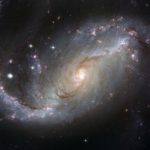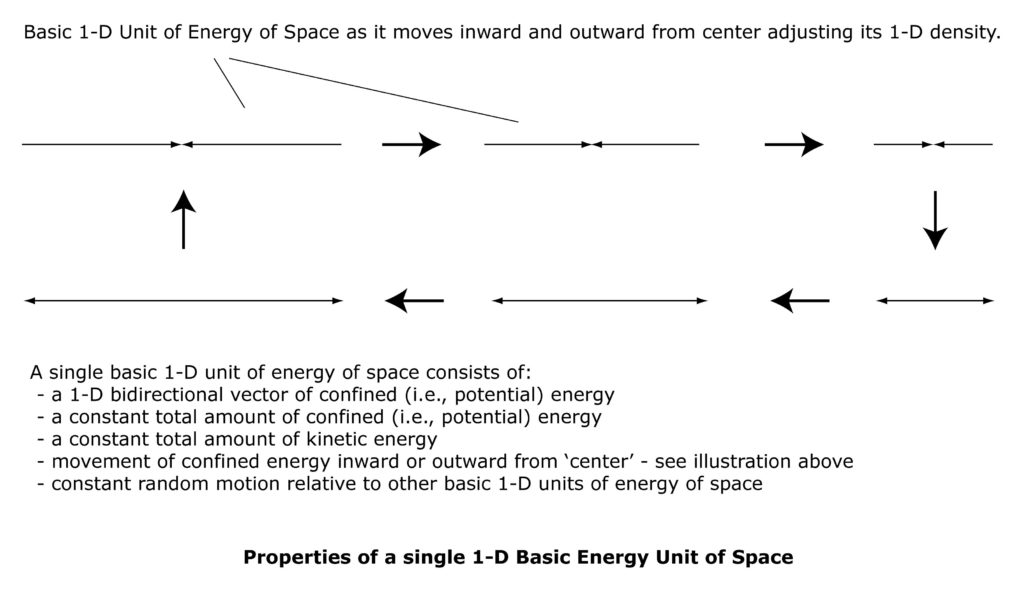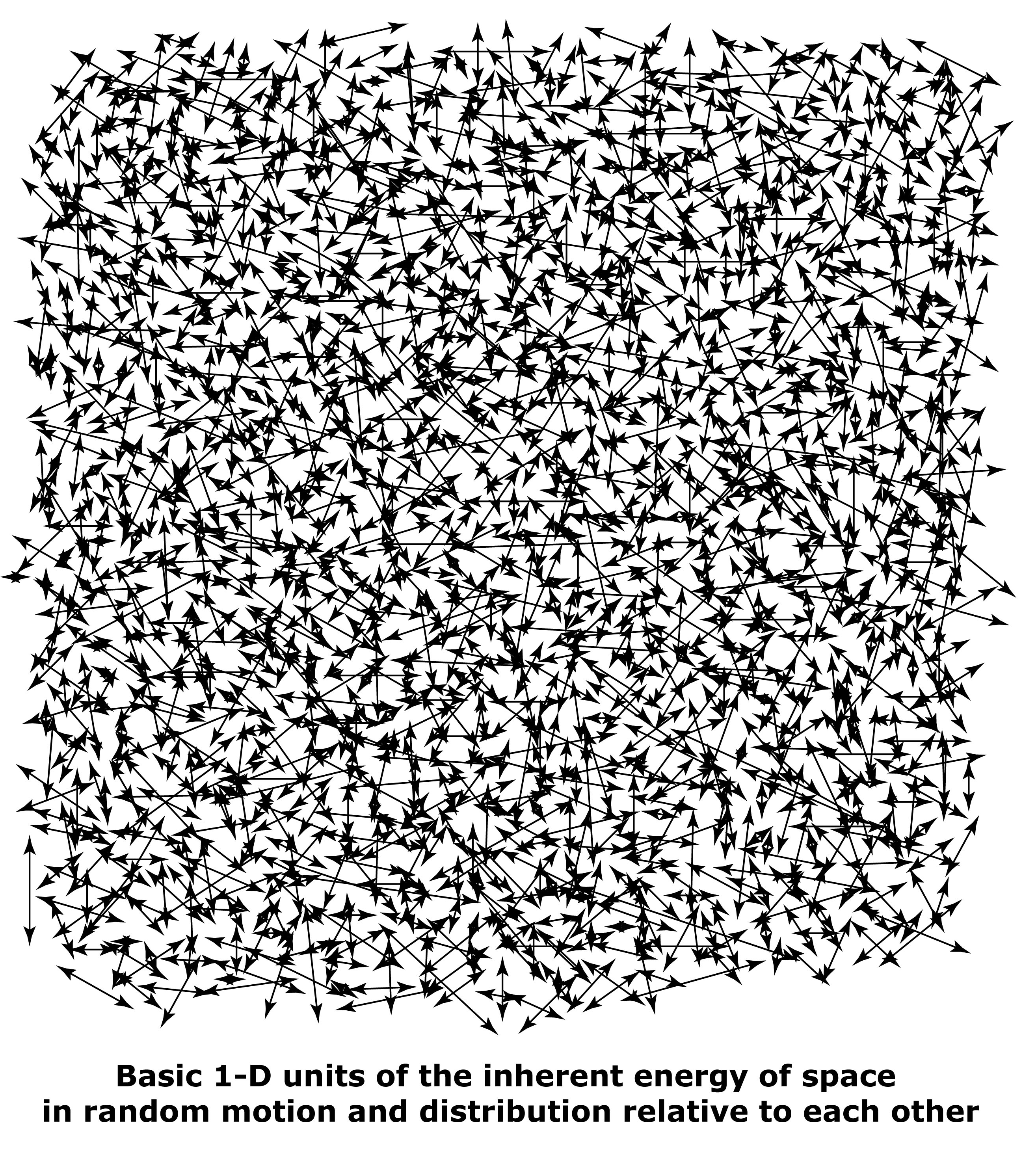 The inherent energy of space is composed of basic 1-D bidirectional units of energy in constant random motion and distribution relative to each other. This constant, random motion creates 1-D, 2-D, and 3-D space as the basic 1-D units of energy cross paths, creating networks of 2-D and 3-D space. When there is maximum randomness, there is optimal system directional balance, allowing the inherent energy of space to exist at its lowest possible energy level – in a state of dynamic equilibrium – with directionally balanced kinetic energy and potential energy.
The inherent energy of space is composed of basic 1-D bidirectional units of energy in constant random motion and distribution relative to each other. This constant, random motion creates 1-D, 2-D, and 3-D space as the basic 1-D units of energy cross paths, creating networks of 2-D and 3-D space. When there is maximum randomness, there is optimal system directional balance, allowing the inherent energy of space to exist at its lowest possible energy level – in a state of dynamic equilibrium – with directionally balanced kinetic energy and potential energy.
Space possesses an inherent energy magnitude that is governed by….
a) the amount of energy per 1-D basic unit of energy of space (potential energy),
b) the number of 1-D basic units of energy per unit area or unit volume (potential energy),
c) the rate of motion of the 1-D basic units of energy relative to each other (kinetic energy), and
d) the degree of randomness of motion and distribution of the 1-D basic units of energy relative to each other.
The 1-D basic units of space possess an inherent, optimal size and rate of motion to allow maximum randomness of motion and distribution relative to each other, allowing the energy of space to exist at its lowest possible energy level.
The amount of potential energy per 1-D basic unit of space remains constant. Each 1-D basic unit of space may move inward or outward relative to its system center, with its 1-D energy density changing accordingly. This motion inward and outward from 1-D center allows the 1-D basic unit of space to adjust its density in a manner that maintains the ‘average’ density of space itself as the 1-D basic unit moves randomly relative to other 1-D basic units.
 The inherent energy of space can only provide “h” amount of 1-D magnetic energy (Planck’s constant) per 1-D electromagnetic (e-m) interaction. In 2-D and 3-D e-m interactions, the energy of space provides additional directional balance per e-m interaction by forming gravitational energy gradients around 2-D and 3-D elementary energy (e.g., electrons, protons, atomic nuclei).
The inherent energy of space can only provide “h” amount of 1-D magnetic energy (Planck’s constant) per 1-D electromagnetic (e-m) interaction. In 2-D and 3-D e-m interactions, the energy of space provides additional directional balance per e-m interaction by forming gravitational energy gradients around 2-D and 3-D elementary energy (e.g., electrons, protons, atomic nuclei).
